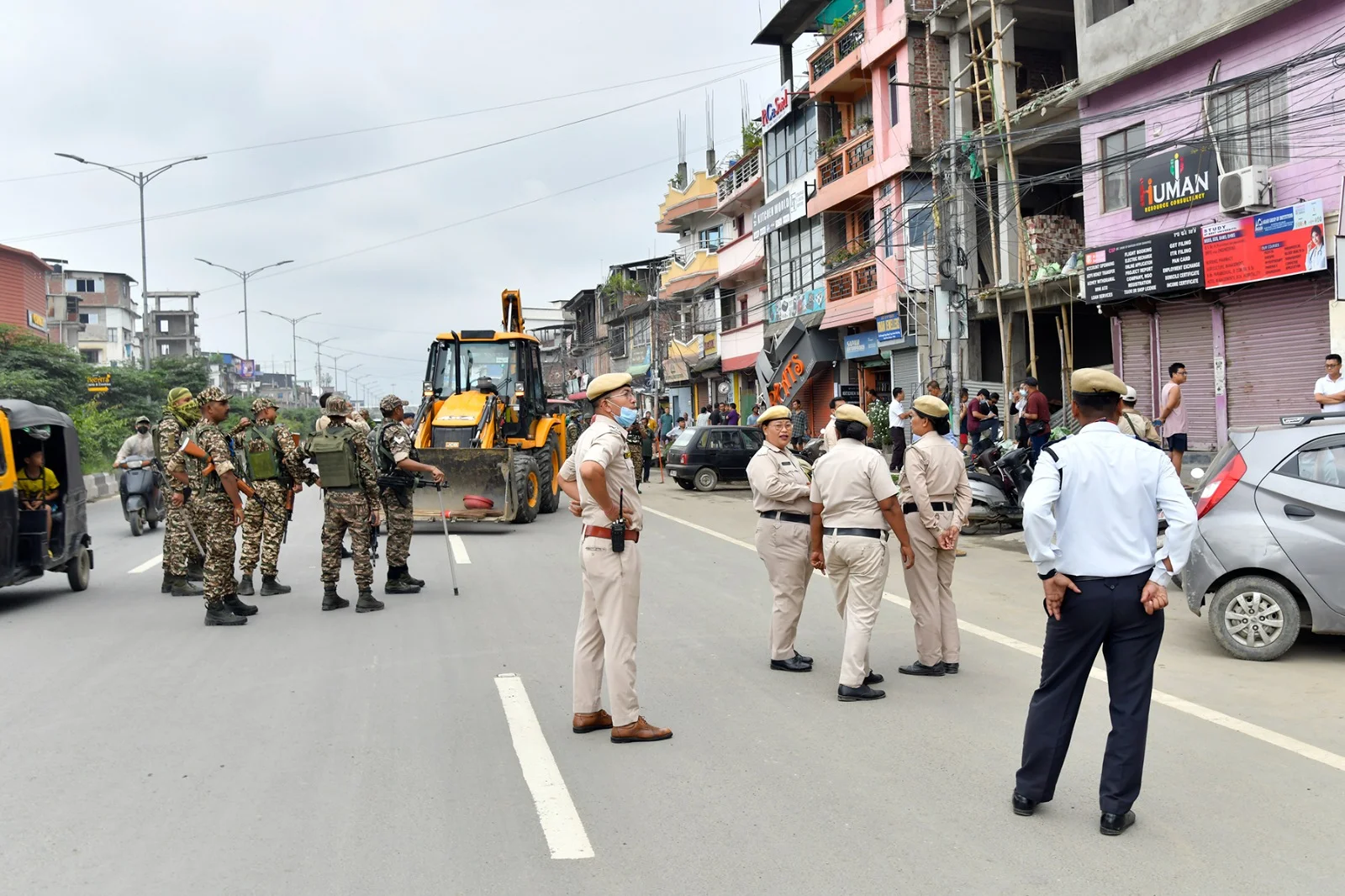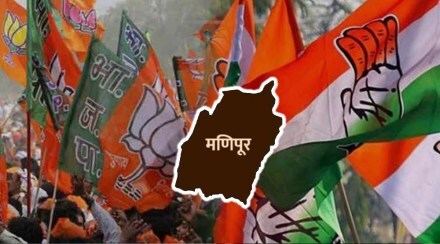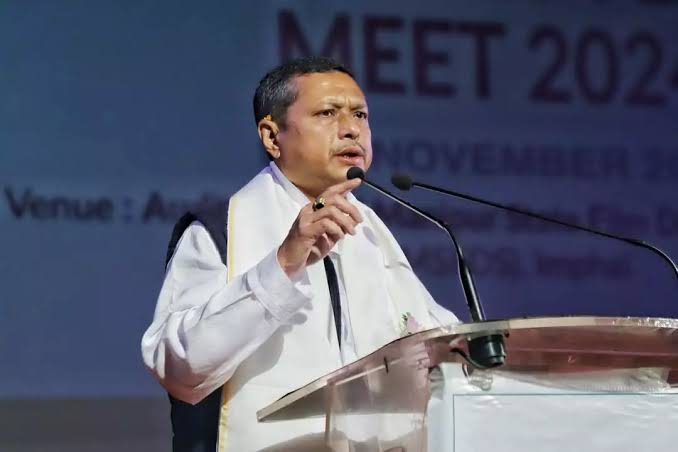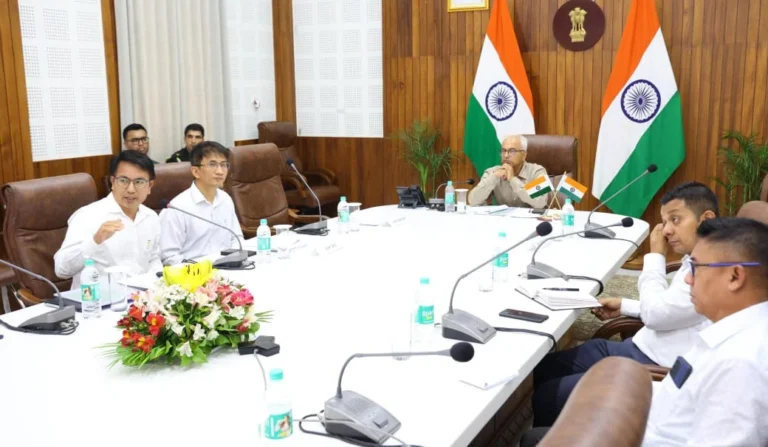Imphal Eviction Drive Clears Encroachments Along Airport Road
Short Summary
Authorities on Saturday launched a targeted eviction drive along the Keishampat–Malom stretch of Imphal Airport Road in Imphal West district to remove unauthorized structures obstructing public spaces . Led by the Imphal West district administration and supervised by Deputy Commissioner Mayanglangbam Rajkumar, the operation—with support from the Manipur Police, CRPF, and revenue officials—deployed heavy machinery, including a JCB, to dismantle illegal house extensions, shops, sheds, and debris under the Manipur Public Premises (Eviction of Unauthorised Occupants) Act, 1978. The drive aims to alleviate traffic congestion and restore pedestrian pathways, and authorities have appealed to shopkeepers and residents to desist from further encroachments .
Full Article
Why This Eviction Drive Matters: Setting the Scene
Have you ever driven along Imphal Airport Road and felt your car inch forward like a snail stuck in molasses? If so, you’re not alone. Traffic snarls, blocked footpaths, and haphazard stalls have become all-too-familiar sights along the vital Keishampat–Malom corridor. But why should you care about an eviction drive? Well, imagine your daily commute finally flowing smoothly, pedestrians reclaiming safe walkways, and the city’s main artery breathing freely again. That’s the promise behind this latest initiative.
In many cities around the world, unauthorized encroachments—think makeshift shops, room additions jutting into public strips, and piles of construction rubble—creep onto roadsides like invasive vines, choking movement and safety. Imphal Airport Road, connecting the city center to its aviation gateway, is no exception. The local administration’s decision to clear these obstructions marks a bold step toward reclaiming public spaces and enhancing urban mobility.
Understanding the Legal Backbone: The Manipur Public Premises Act, 1978
Before any structure can be forcibly removed, there’s a legal compass guiding the process. In Imphal West district, officials invoked the provisions of the Manipur Public Premises (Eviction of Unauthorised Occupants) Act, 1978. This Act empowers authorities to:
- Identify unauthorized occupants of government land or premises.
- Issue notices demanding voluntary vacation of such premises.
- Enforce eviction through court orders if occupants fail to comply.
By operating within this statutory framework, the administration ensures that actions are legally sound, minimizing allegations of arbitrariness or overreach. If you’ve ever wondered how governments justify tugging down a wall or uprooting a roadside stall, this Act provides the answer
Who’s Who in the Eviction Drive: Key Players on the Ground
No mission this ambitious happens in isolation. Here’s the dream team that made Saturday’s drive possible:
- Imphal West District Administration
- Leader: Deputy Commissioner Mayanglangbam Rajkumar
- Role: Planning, coordination, legal oversight
- Manipur Police
- Role: Ensuring law-and-order, traffic management
- Central Reserve Police Force (CRPF)
- Role: Crowd control, auxiliary security
- Revenue Department Officials
- Role: Surveying encroachments, verifying land records
- Heavy Machinery Operators
- Equipment: JCB excavator for demolition
Together, these units moved in tandem—like an orchestra performing a complex symphony—to ensure the drive proceeded smoothly, safely, and swiftly
Step-by-Step: How the Eviction Drive Unfolded
Ever taken on a big DIY project at home? You know the drill: clear the workspace, gather your tools, and tackle one section at a time. The eviction drive followed a similar blueprint:
- Pre-Drive Survey and Notice
A few days prior, revenue officials mapped out encroachments—shoddy shops, blocked footpaths, illegal debris piles—and issued eviction notices to occupants. - Early-Morning Kickoff
At first light on Saturday, personnel assembled near Keishampat. Traffic diversions were put in place to minimize surprises for early commuters. - Deployment of JCB and Support Equipment
The JCB excavator arrived, ready to dismantle stubborn structures. Support equipment included barricades, cones, and signage to guide traffic. - Demolition and Clearance
Under DC Rajkumar’s watchful eye, teams moved block by block. Bricks came down, tin sheds were uprooted, and debris was hauled away—sometimes sparking protests from shopkeepers, but mostly met with passive compliance. - Site Restoration
Once the debris was cleared, workers swept the roads, removed leftover nails and glass, and repainted faded lane markings. Pedestrians could instantly feel the difference—a wider, cleaner walkway beckoned them. - Continuous Monitoring
Even as the day ended, patrol teams remained on standby, ensuring no new encroachments popped up like weeds overnight.
This methodical approach meant minimal surprises and swift restoration of public lands.
Voices from the Ground: Reactions and Reflections
Shopkeepers and Residents
Some shopkeepers, whose makeshift stalls were dismantled, voiced frustration—“I built my stall here because rent downtown is sky-high,” one lamented. Yet others acknowledged the long-overdue need for order: “I can finally park my scooter without fear of fines,” said a local resident.
Deputy Commissioner Rajkumar
Rajkumar appealed to the public: “This is not a punitive exercise but a corrective measure. We urge everyone to respect public property and cooperate with authorities”
Civil Society Organizations
Local NGOs lauded the drive’s focus on pedestrian safety and traffic decongestion, while urging authorities to pair enforcement with dialogue—offering designated vending zones and relocation assistance for displaced shopkeepers.
These diverse viewpoints underscore the complexity of urban management: balancing livelihoods with civic order.
Frequently Asked Questions
1. What legal provisions govern eviction of unauthorized occupants in Manipur?
The Manipur Public Premises (Eviction of Unauthorised Occupants) Act, 1978 empowers authorities to issue notices and enforce evictions of unauthorized structures on public land
2. Who supervised the recent eviction drive on Imphal Airport Road?
The operation was supervised by Imphal West Deputy Commissioner Mayanglangbam Rajkumar, with support from the Manipur Police, CRPF, and revenue department officials
3. What kinds of structures were removed during the drive?
Authorities dismantled unauthorized house extensions, shops, sheds, and debris obstructing roads and footpaths along the Keishampat–Malom stretch
4. How can displaced shopkeepers continue their businesses legally?
Shopkeepers are encouraged to relocate to designated vending zones or approved market areas. Authorities and NGOs can collaborate to provide low-cost stalls with basic amenities.
5. What ensures that cleared areas remain obstruction-free in the future?
Sustained monitoring using patrol teams, CCTV, community reporting mechanisms, and periodic clean-up drives helps maintain cleared public spaces.




